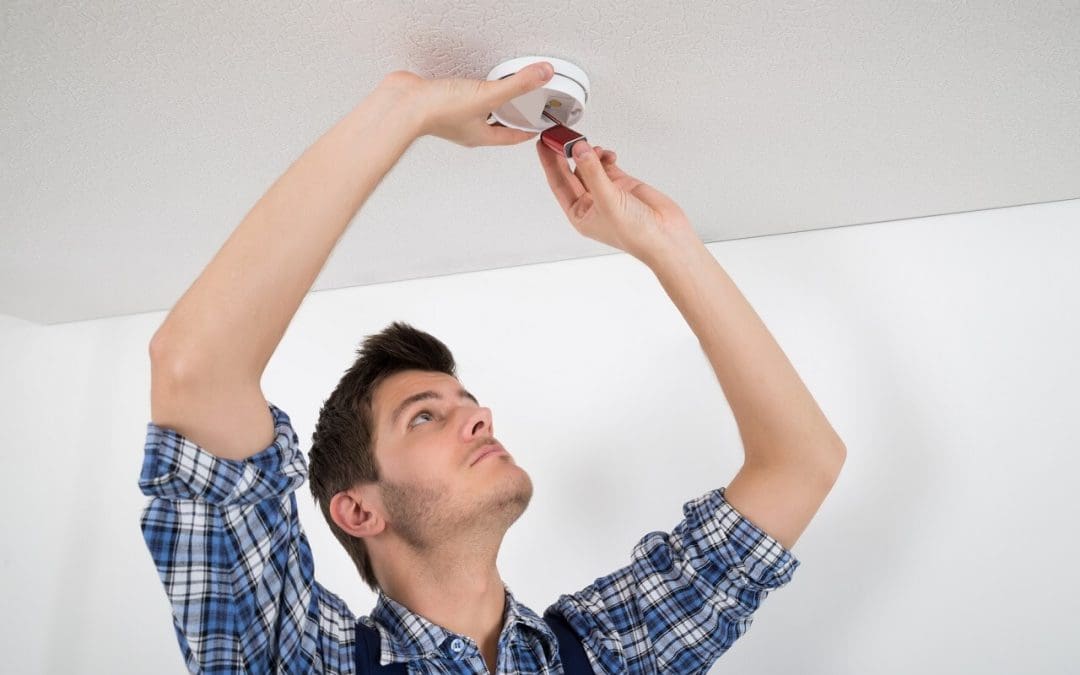The importance of proper smoke detector placement cannot be emphasized enough. The U.S. Fire Administration reports that the chances of surviving a house fire increase by 50% with operational smoke detectors. Still, smoke detector placement and maintenance are also crucial factors.
Homeowners should check with the manufacturer’s suggestions on maintenance guidelines. The devices should be manually tested every month, they should be completely switched out every 10 years, and the batteries should be replaced twice a year. An easy way to remember to change the batteries is to do it when adjusting your clocks for daylight savings. When installing them, proper placement in every part of the house is essential.
1. Smoke Detector Placement in Basements
If you have a basement that houses your heating or cooling system, laundry facilities, or one that has been converted into a playroom or living space, it needs a smoke detector. Even if you do not routinely go into your basement but it is still used in some capacity, it needs to be protected. When deciding on smoke detector placement spot for basements, pick an area on the wall or ceiling closest to the top of the staircase.
2. Living Spaces
Several locations for smoke detector placement are not optimal for living spaces. Avoid installing the alarms near heating and air conditioning vents, wood burning appliances, and fireplaces. These could interfere with their effectiveness. If your ceilings are vaulted, the right smoke detector placement is slightly below the slanted peaks, but the detector should not be lower than 3 feet from the top. Ceiling fans should be factored in because the blades can blow smoke away from the detectors. Install detectors at least 33 inches away from the tips of the blades.
3. Second and Third Floors
Multilevel structures need a smoke detector at the top of each stairwell. Staircases need to have smoke detectors because they are one of the main exits in the event of any emergency. The placement of the staircase determines smoke detector placement. If they are built against the wall, the detector can be placed high on the wall over the staircase. If the stairwell comes up the center of the house, put it on the ceiling as close to the steps as possible.
4. Hallway Smoke Detector Placement
Some homes have very long hallways. In these situations, the smoke detector placement should be every 30 feet. Another factor to consider is the arrangement of the bedroom doors. It’s a good idea to have a smoke detector outside of each bedroom door, unless they are directly next to each other. This may mean you will need them closer than 30 feet apart in a long hallway with many bedrooms.
5. Smoke Detector Placement in Bedrooms
If a fire starts while people are sleeping, a smoke alarm is their first defense. Today, many detectors come with automatic lighting. This additional safety feature will help the occupants navigate away from the fire to their escape routes. Like the other living areas, smoke detector placement in bedrooms should avoid vents and fans. Most manufacturers recommend it be installed on the ceiling space above the door.
6. The Kitchen
Some areas do not necessarily need a smoke detector. It is not always recommended to install one in the kitchen because cooking can set off false alarms. If you want one for this room, place one far away from the stove or right outside the room.
Buildings must be equipped with carbon monoxide detectors and smoke alarms. Carbon monoxide is a gas that can cause illness and death. Homeowners can use combination alarms that detect both substances for added security.
Encompass Home Inspection Service provides home inspection services to Southern New Jersey and Southeastern Pennsylvania. Contact us to book an appointment.

